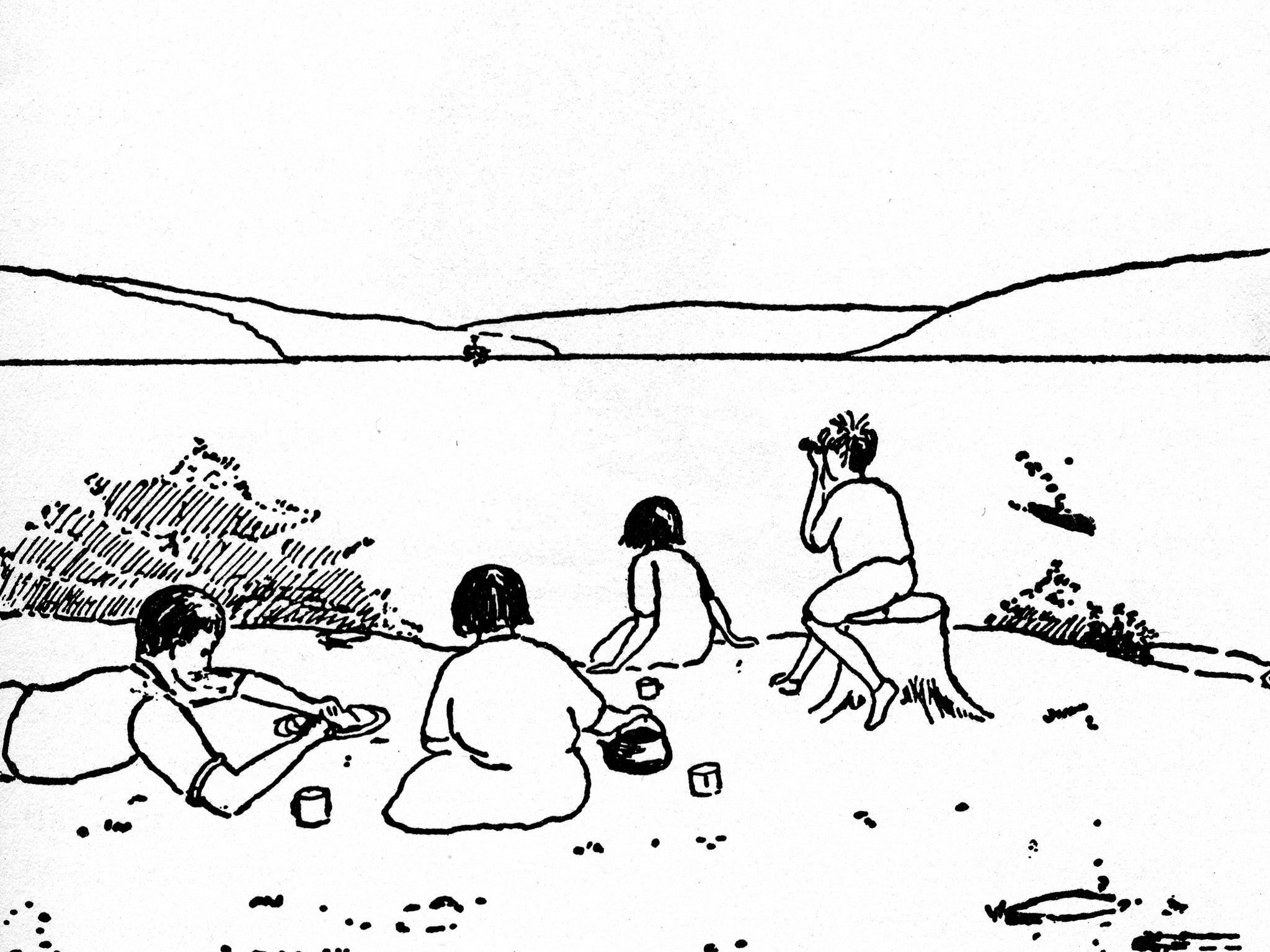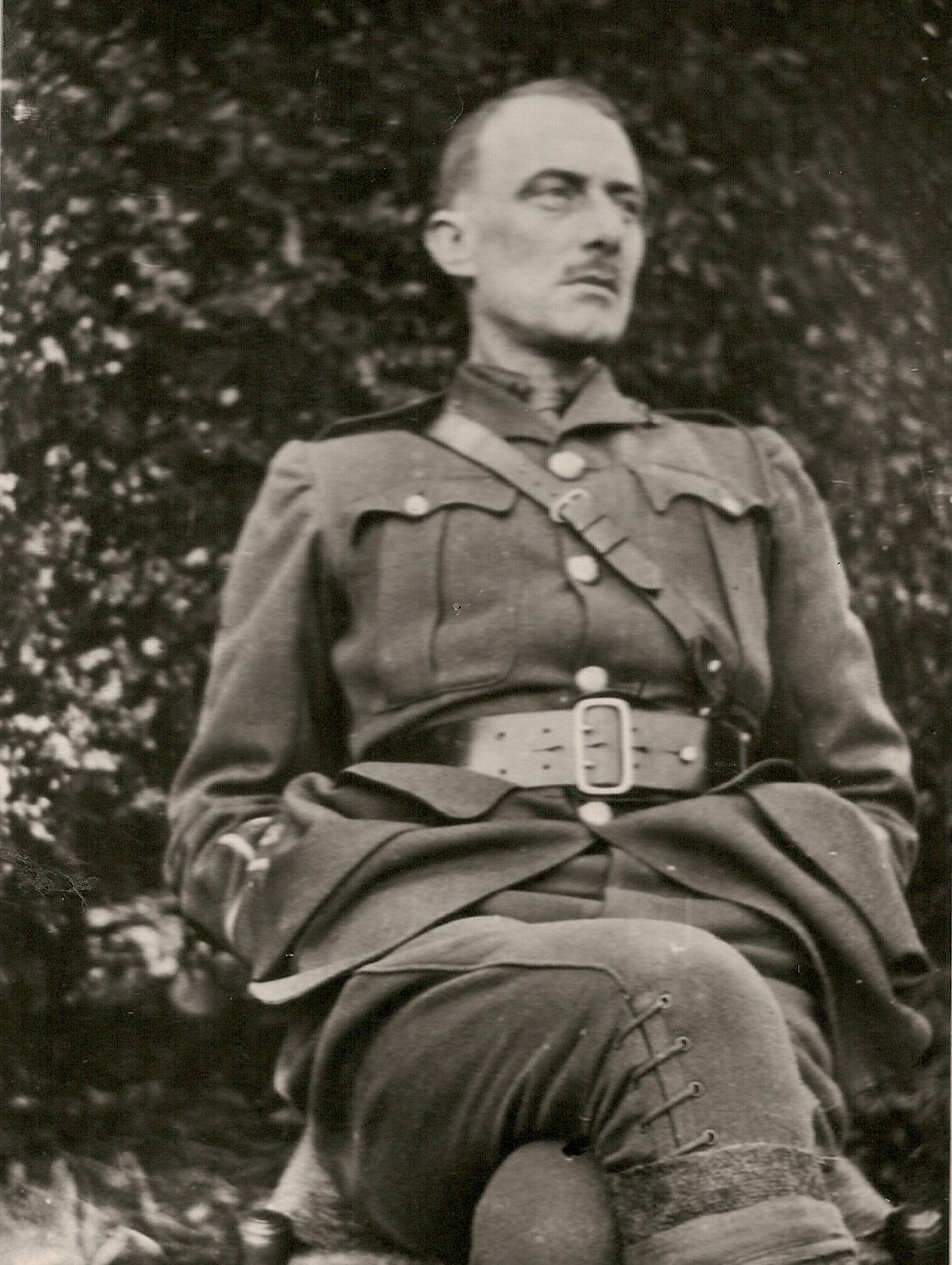How a childhood nightmare encouraged me to find the perfect hiking route
In Britain, ancient byways criss-cross the land. Will Gore asks whether our ego-centric fascination with wildernesses obscures the equal beauty of well-worn country tracks

Perhaps it started with a dream. Not a good one, mind you.
I began having the recurring nightmares when I was four or five. On the face of it they may have been sleep terrors, as I was unable to be roused through my cries, despite seemingly being awake. Yet most sufferers of night terrors don't remember the detail of their visions, which leave them inconsolable. Mine were all too vivid.
Each time, the dream was the same. It began with an idealised image of an English cottage, as if from a picture postcard. Thatched and whitewashed, with a central front door painted red and four windows – two up and two down. It was the cottage of a small child’s imaginings and any number of nursery rhymes, not all of them with happy endings.
The house, viewed as though through a camera lens, was bathed in sunshine. As the camera panned out it revealed a similarly story book garden, all green grass and roses, then a white picket fence, with a gate in the middle, from which a path made its way to the lovely front door.
Was this my home? Safety? I wanted to be there. Yet as the camera continued to zoom out it was revealed to me that surrounding the cottage was not any sort of summery landscape; no charming village or wildflower meadows.
Rather, there was a peculiar and horrifying machine, a vast, clunking mass of very slowly turning cogs, wheels, chains and pumps – all metal, but blackened and coated with thick oil and grease. I knew I must find a way through this hideous mechanism yet the harder I tried to work out a route to the welcoming cottage, the further away it seemed and the bigger and more gruesome the machine surrounding it became.
Where the house had once filled the entirety of the dream’s viewpoint, it grew ever more distant, until it was eventually little more than a pinprick of white in the centre of a dark morass of impassable, almost bestial mechanisation. A path, a path, my kingdom for a path! – but alas no. At this point, I finally awoke, terrified.
Over time the dream intruded into my sleep with less frequency until at last I was free of it – aside from a brief relapse at the age of 11 in the weeks following a hospital operation. As the product of an insecure and anxious child’s mind, the nightmare was, I suppose, all too obvious in its meaning. I have, for the most part, grown up and moved on.
Yet over the years I have thought about the dream often and wondered if it has a residual manifestation in my lifelong obsession with finding the perfect contryside pathway. Unlike in those night visions though, my real life hunt for an ideal route is unconcerned with the matter of destination, let alone bound up with a desire to get “home”. I can happily stare at a map – any map – for hours, trying to work out which footpaths might provide the most interest, the best view, an intriguing twist or climb or descent. Where they end up is largely irrelevant.
That carelessness about where the way may lead turns the primary purpose of a path on its head of course. They are – or at least were – fundamentally a means of practical communication, created over time to enable people to trade with one another.
In Britain, ancient byways criss-cross the land, worn by human foot and animal hoof. Often they follow the contours of higher land, where there was less chance of travellers being surprised by assailants or of becoming lost. Take the Icknield Way and the Ridgeway path, for instance, which between them provided a route from the East Anglian coast all the way to Dorset, striking out across the Wessex Downs and the Chilterns Hills. Like Watling Street, which ran from Kent to the north west – Chester and beyond – these paths had a primarily commercial purpose, enabling drovers to move animals to distant markets and other traders to offer their varied wares.

Still, pathways are not only a necessity born of social or commercial need. They have, almost for as long as they have existed, captured imaginations – even been established for positively unpractical purposes; as elements within or between ancient religious monuments (Avebury for instance), or in more recent times as a means to admire the aesthetics of man-made gardens or estates.
Representations in art abound too. Bleak boardwalks appear across Paul Nash’s barren, First World War landscapes, leading straight into hell. More inviting pathways litter the pastoral scenes both of old masters like Constable, and any number of romantically inclined amateur watercolourists.
As a literary device paths are crucial to the point of ubiquity, either as direct metaphors or in broader allegories, such as the Pilgrim’s Progress.
Having picked Kazuo Ishiguro's The Remains of the Day more or less at random off my bookshelf, sure enough I found Stevens the Butler recalling that “Lord Darlington wasn’t a bad man…He chose a certain path in life, it proved to be a misguided one, but there, he chose it, he can say that at least.”

It is notable though that perhaps the most famous of poetic paths was the one not followed. What’s more, it is frequently misunderstood – for it is not the mother of all “life as a series of pathways” metaphors, but in fact the precise opposite. In ‘The Road Not Taken’, Robert Frost essentially highlights how we often like to perceive that seemingly simple choices affect our destiny, when the simple truth is we can rarely tell whether or how things might have turned out differently.
The Road Not Taken
Two roads diverged in a yellow wood,
And sorry I could not travel both
And be one traveller, long I stood
And looked down one as far as I could
To where it bent in the undergrowth
Then took the other, as just as fair,
And having perhaps the better claim,
Because it was grassy and wanted wear;
Though as for that the passing there
Had worn them really about the same,
And both that morning equally lay
In leaves no step had trodden black.
Oh, I kept the first for another day!
Yet knowing how way leads on to way,
I doubted if I should ever come back.
I shall be telling this with a sigh
Somewhere ages and ages hence:
Two roads diverged in a wood, and I –
I took the one less traveled by,
And that has made all the difference.
In the books of my childhood, paths and tracks were less allegorical, more the narrative means by which adventures could be moved from one location to another. Arthur Ransome was my favourite author by a mile; I followed his Swallows and Amazons, when not in boats, trekking up hill and down dale in the Lake District, or across muddy creeks on the Suffolk coast.
In ‘Swallowdale’, the pirates and explorers take on the summit of ‘Kanchenjunga’ (the Old Man of Coniston):
“Peggy was already running along a clearly marked path, a narrow lane through the purple heather and a track trodden firm across the grassy spaces...There was only room...for one sheep or person, so that the expedition had to march in Indian file.”

Yet of course, since too many paths would spoil the discoveries of the pioneers, overly obvious tracks are frequently eschewed:
“‘We shan’t go by the path,’ said Nancy. ‘When we come to a rock, we'll go over it.’”
As an indicator that a secret location may already have been visited by others, a well-trodden path can even cause high anxiety:
“‘That’s all right,’ said the able-seaman [of a path ahead, bearing to the left]. ‘So long as it doesn't go up the beck into our valley.’”
In recent years, there has been a renaissance in non-fiction writing about the countryside, and a renewed interest especially in notions of wildness. Perhaps it is a reaction against busy lives and the intense pull of modern technology.
Communing with wilderness is all very well, but is more difficult on a busy byway, thronged with hikers. Many recent explorations of our connection with the land have therefore followed the example of Nancy Blackett, captain of the Amazon, and stayed firmly off the beaten track.
I can well understand it. There is undoubtedly a thrill in walking through seemingly virgin territory, in which signs of previous human endeavour are minimal. We can feel at one with nature, if that is your preference, or – for people of faith – closer to God. Robert McFarlane recounts in his marvellous ‘Mountains of the Mind’ that one of the attractions of high places in earlier times was the notion that they could bring man closer to a heavenly creator; in more recent times mountains have been climbed – conquered – so that we can see into our own souls.
And yet given the choice, would I set out across an empty moor, tacking through the scrubby heather, or would I strike for the dusty path, invitingly visible but not so wide as to suggest too many fellow travellers? As a generally risk averse kind of guy, and with my nightmare at the back of my mind, I suspect it is the latter.
There is, in any event, a deep comfort in the knowledge of being part of a continuum; a tiny element in long human lineage. Just as mountains or rivers, or ancient trees and thrashing seas can (if we let them) remind us of our individual inconsequentiality by emphasising the immutability of nature, so can a footpath, its own personality fashioned by thousands of feet over generations. Some egos cannot handle the idea of course, hence the desire to seek out inner individualism by overcoming truly wild places. But it seems to me the most reassuring thing is to trek through a wood, or along a valley floor, or over a hill, following the boot-worn track walked by people I did not know, who saw (more or less) what I see; the same track which others in the future will walk too, blissfully unaware of my former presence.

Is there though a perfect pathway? There are, of course, a great many; their flawlessness glimpsed often only in moments. They can be rocky – a scramble up the eastern flank of Beinn Alligin in the Scottish Highlands – or they can be soft and grassy; through an edelweiss-filled Alpine meadow. They can afford the most astounding of views, or they can be hemmed in by trees, or even by weather (in a dense fog, the sight of a definite path is beautiful indeed).
The age of a route isn’t everything. A hint of the antediluvian is no pre-requisite to pathway perfection. As Edward Thomas noted in his classic account of travelling the Icknield Way, “a disused railway embankment gave me more pleasure than a prehistoric dyke”.
The other day, walking with my children around the remains of iron-age hillfort in Hertfordshire, we came to a sort of tunnel of holly, which created the most astonishing dappling effect as the sunlight strove to reach us through the beech canopy high above and the spiky leaves just over our heads. The beauty captured in that five-yard stretch, made possible by the precise quantity of summer foliage and the specific angle of the sun, would be difficult to replicate if I went there again a dozen times.
Not that snapshots are the be all and end all. The joy of a pathway is, of course, as much in its windings as in those momentary vistas; the dynamic shifts underfoot and all around. Thomas again, the father of 20th century landscape writing, describes the changing track before him:

“I climbed up past the ‘Red Lion’ at Whiteleaf…and went down a hedged and rutted lane, leaving the spire of Princes Risborough half a mile below on my right. The way was some distance up on a steep slope, and itself in places so steep from side to side that there were two tracks, one two yards above the other…
“Turning to the right…the Icknield Way was white with green edges…Over one railway and under another its level green edges were trimmed with silver-weed; in the hedges there were elms. Past the Bledlow road it was a broad, rough lane, soon green, between hedges…It climbed until at the ‘Leather Bottle’ it reached its highest point since Telegraph Hill, and it had woods above and below – which rarely happens to it – as it passed above the head of a beech-sided coombe having an entrance apparently higher than its back.”
Another perfect example left me stumped for years, simply by virtue of my mind having gone blank as to its whereabouts. Yet I could picture it clearly, coming towards the mid-point of a circular walk I had done somewhere, I felt sure, in the Yorkshire Dales. The path had for most of the way been easy going, mundane even, through fields shared by sheep; never reaching the top of the ridge to my right. Turning away from the ridge, however, brought us suddenly and unexpectedly into a narrow and steep-sided ravine, with large stones that clattered underfoot.
For years I thought of that valley, unsure exactly where it was until I finally spent an evening with Google maps, scanning satellite views of likely areas, villages I thought I had visited – Kettlewell, Linton, Starbotton. Finally, my eye roved north of Grassington and suddenly I had it: Conistone Dib, a high-sided limestone gorge, the sheer rock on either side muffled by layers of moss and lichen, the path twisting it seemed into the bowls of the earth.
Oddly, what I never managed to recall was who I had been with at the time or why I was there, or where I had been before and where I went next. Maybe it was just a dream. But no, it was simply a path taken, then forgotten. It – like all the others once walked and the many still to come – will make all the difference.
Join our commenting forum
Join thought-provoking conversations, follow other Independent readers and see their replies
Comments